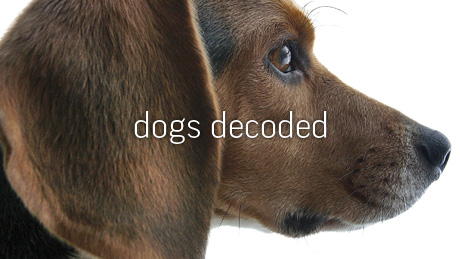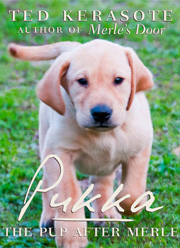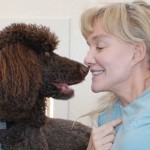Let’s begin with a little thought experiment. I’ll say a phrase and you pay attention to the images, thoughts, and feelings that occur to you. Don’t  force, direct, or censor your thoughts. Just let what comes, come. By just allowing things to surface in our minds without interfering we can tap into societal messages that we have absorbed even if consciously we don’t agree with them. Okay, here we go. Repeat these words slowly to yourself: Pack of dogs………..
force, direct, or censor your thoughts. Just let what comes, come. By just allowing things to surface in our minds without interfering we can tap into societal messages that we have absorbed even if consciously we don’t agree with them. Okay, here we go. Repeat these words slowly to yourself: Pack of dogs………..
I tried this exercise with Ira and myself.
I immediately saw three dogs tearing a dead deer apart. They were growling at each other to protect their share. I recoiled at the image. Ira said, “Wolves come to mind. They’re chasing after something. Another animal. Maybe people. Fear. Menace. Danger.”
Just so you know, I didn’t share my thoughts with Ira. He read them for the first time when he previewed this post.
My awesome physical therapist (She’s keeping my right shoulder out from under the surgeon’s knife.) said this when I causally mentioned I was writing a blog post about the use of the word “pack” in reference to dogs: “Pack. It’s like the dogs are fighting with each other. They’re dangerous. And then I think, if that’s how someone sees dogs, how will that affect how they behave towards them?” Like I said, she’s awesome.
Ever since I read my pal, Edie Jarolim’s, post “Quick fixes & cover judging,” in which she pondered a positive celebrity trainer’s use of the term “pack,” I couldn’t unpack pack from my brain. It just kept prowling around in there.
Questions doggedly nipped at my thoughts: “What associations and connotations does the word pack evoke? Do they matter? If so, how?”
Thus, came my little thought experiment.
As for the results? I think they’re telling, despite my having an “n” of 3 only. Unless Ira, my PT, and I are living under a rock, we are not alone in our not-so-benign associations with pack as it applies to dogs.
Some of my favorite bloggers, trainers, and scholars use the term pack. But, honestly, I wish they didn’t. The term has been around for so long and it’s use so second nature that I think many of us use pack without considering how it might land in the minds of others, like a stone tossed into a pond, causing ripples of unintended mental connections such as those Ira, my PT, and I made.
Furthermore the word pack does not exist in isolation. It has siblings—namely “wolf”, “alpha” and “dominance.” Ira specifically made the wolf connection. I didn’t explicitly mention “alpha” or “dominance,” but both were implied in my image of the pack of dogs claiming and protecting their share of venison.
Pack, wolf, alpha and dominance are like interwoven threads in a medieval tapestry (pardon my metaphor mixing) depicting a familiar notorious narrative that goes something like this: Dogs are wolves. They live in packs. They naturally seek dominance over other pack members in order to attain and retain the coveted alpha, top-dog position. From a dog’s point of view, the people they live with are members of their pack who they also will try to dominate given half a chance because that is their nature. Training your dog entails making sure your dog sees you as the alpha-wolf. You should not hesitate to meet challenges to your supremacy with force.
Unlike the static, one-of-a-kind tapestries hanging on the walls of castles scattered throughout Europe, our needlework has special properties. It’s more Hogwarts than Versailles. It’s alive. It’s a self-replicating myth. All we have to do is mention, or merely allude to, just one of the threads in the needlework narrative, pack for example—and “POOF”! Magically the storyline of wolf-cum-dog leaps to life on the walls in the halls of people’s minds, whispering its twisted tale over and over again. It’s a story that, need I say, is retold like a favorite fairy tale to children at bedtime, week in and week out, ad nauseum, on TV by you-know-who and by his groupies and wannabes in cyberspace, and by misguided dog trainers around the country. A story repeated often enough, even if it’s made up, takes on the tenor of truth through repetition.
So what?
First, as I’ve said, the yarn that dogs are wolves on its face isn’t fact. “Dogs have an obligatory symbiotic relationship with humans,” according to Ray and Lorna Coppinger. Wolves don’t, and no amount of human handling of wolf pups will create adults that produce tame offspring. Wolves are wild. Dogs are tame and trainable. Dogs are not wolves.
Furthermore, wolves don’t live in packs—a term originally used to refer to captive, unrelated wolves who were forced to live together, and thought to compete aggressively with each other for dominance and alpha leadership of the pack. Wolf researcher, David Mech, the originator of the term “alpha,” rues the day he coined the word. Wolves living naturally in the wild live together mostly in nuclear family groups typically consisting of a breeding pair and offspring. So even if you want to stick with the dogs-are-wolves canard, technically you still gotta give up “pack.” “Family” would be more accurate.
Second, we are likely to perceive our dogs as adversaries with whom we’re locked in a power struggle for the coveted role of the alpha when we peer at them through the distorted lens of our tall tale. Give our dogs a piece of kibble and they’ll take the whole bag. Not only does this view rationalize inflicting pain and instilling fear in our dogs in the name of gaining dominance over them, it’s reductionistic. Fido is reactive towards other dogs? You’re not alpha enough. Spot poops on your bed when left in the house for hours on end? He’s dominating you, and, well, you’re not alpha enough. (Do You Suffer from Alpha Anxiety?)
Our relationships with our dogs are multi-faceted and complex. How much sense would it make to reduce every difficulty you encountered with your young child to your not being dominant enough? Not much. In fact, you might be thinking that your authoritarianism is a big part of the problem. That doesn’t mean you let your child run wild. Establishing rules, boundaries, and limits, being consistent, feeling empathy, and expressing understanding are integral to being a good parent. It’s not so different with our dogs.
Third, pack activates notions of dogs as dangerous. Ira, my PT, and I all came up with ominous images of threatening dogs in response to thinking about “pack of dogs.” Dogs are suffering enough as it is because so many people are so ignorant of normal dog behavior that a dog who offers an appropriate warning growl when provoked beyond measure is labeled “aggressive.” That’s potentially the mark of death. I’m not suggesting that if “pack” was expunged from any and all references to dogs that that would in and of itself eliminate such overreactions. But, I do think we can all do our part to not activate the dogs-are-wolves storyline that predisposes people to see menace where it isn’t.
Last night I eagerly dove into the new November/December 2010 issue of The Bark where I found a review of a book entitled A Pack of Dogs. It’s an anthology of essays about dogs by famous writers including Virginia Woolf and F. Scott Fitzgerald. It sounds like a good read. Publishers decide on book titles banking on their marketing cache. Apparently the folks at Merrell Publishers think “pack” in the title sells books about dogs. Unfortunately, they’re probably right. Just hop on over to Amazon.com and search “pack dogs.” Still, I wonder. How would the book have sold if it were titled A Family of Dogs?
Tags: A Family of Dogs, A Pack of Dogs, Alph, Alpha Anxiety, Alpha dog, Alpha dogma, Alpha wolf, Dangerous dogs, David Mech, Dogs are not wolves, Dogs are wolves, Dominance, Dominance theory, Four-letter word, In, Lorna Coppinger, Merrell Publishers, Pack, Pack of dogs, Ray Coppinger, The Bark, Thought experiment, Wolf, Wolf pack, Wolves












